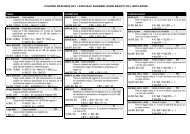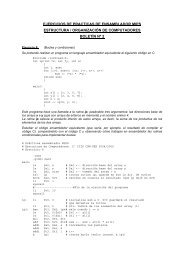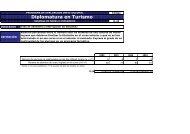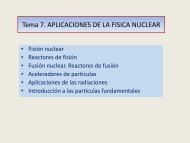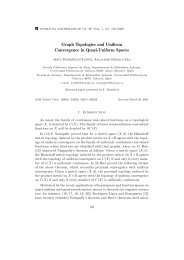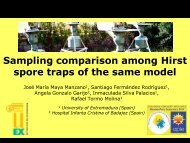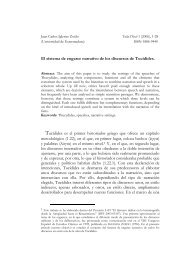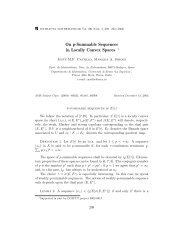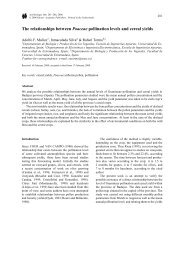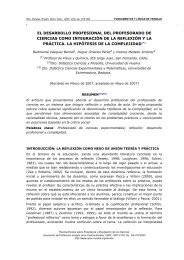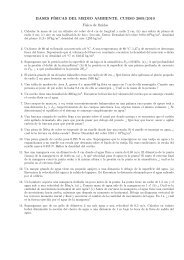10. Una pieza grande de corcho pesa 0.285 N en aire. Supongamos ...
10. Una pieza grande de corcho pesa 0.285 N en aire. Supongamos ...
10. Una pieza grande de corcho pesa 0.285 N en aire. Supongamos ...
Create successful ePaper yourself
Turn your PDF publications into a flip-book with our unique Google optimized e-Paper software.
Grupo 6Ejercicio 16Datos: v= 8m3, Mm <strong>aire</strong>= 29.03 g/mol, R= 8.314 J/mol, P= 1 atmSi la burbuja estuviese <strong>en</strong> equilibrio el empuje seria igual al peso, pero como <strong>en</strong> estecaso asci<strong>en</strong><strong>de</strong> Ft= E-PFt= d <strong>aire</strong> * v <strong>aire</strong> * g – d burbuja * v burbuja * g.Ft= v burbuja * g * ( d <strong>aire</strong> – d burbuja ) = 8 m3 * 9.8 m/s2 * (1.25-1.17) = 6272 NFt= m * a(a?)m <strong>aire</strong>= p * v = n * R * t1 atm * 8000 l = m/29.03 g/mol * 0.082 * atm l/ mol K * (30 + 273) ºC =m <strong>aire</strong>= 9347.2 gPara calcular la aceleracion, la <strong>de</strong>spejamos <strong>de</strong> la formula: Ft= m*a6272 N= 9347.2 * aa= 0.67 m/s2• Para saber como se han calculado las <strong>de</strong>nsida<strong>de</strong>s <strong>de</strong>l <strong>aire</strong> y <strong>de</strong> la burbuja:D <strong>aire</strong> => p * Mm= d * R * TD <strong>aire</strong>= p* Mm/ R* T = 1 atm * 29.03 g/mol / 0.082 atm*l/mol*K * 283 K == 1.25 g/lD burbuja= 1 atm * 29.03 g/mol / 0.082 atm*l / mol*K * 303 K == 1.17 g/lTrabajo realizado por:Joaquín Martín <strong>de</strong> Saavedra Rojas




